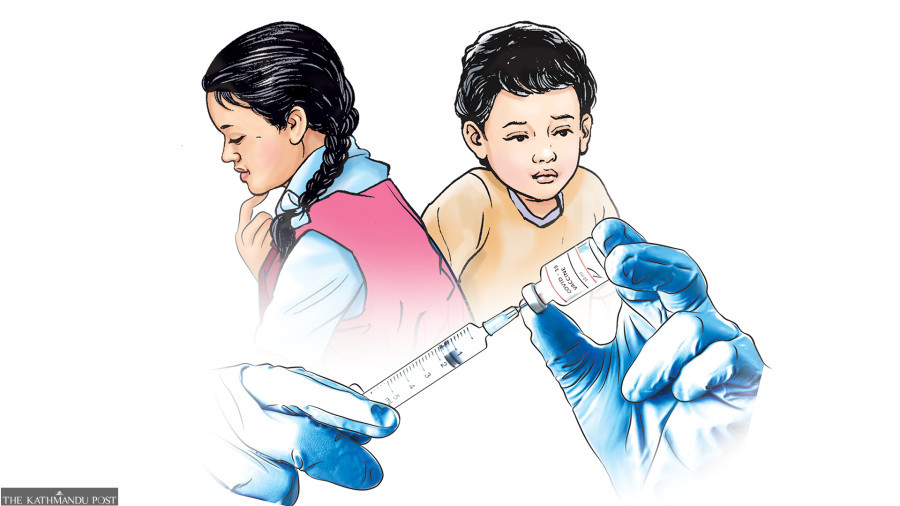Health
Children to receive missed inactivated polio vaccine from next week
Nepal added IPV to routine immunisation programme in 2014. But, due to shortage, kids born from April 2016 to October 2018 missed the jab.
Post Report
Over 1.46 million children born between April 2016 and October 2018 will be inoculated with inactivated polio vaccine (IPV) during a nationwide immunisation drive starting next Sunday.
Officials said, children who missed the IPV vaccine during the routine immunisation programme will be administered the vaccine, as they are at risk of getting infected with Type-2 polio.
“All necessary preparations regarding IPV vaccination to the children deprived of the vaccine are being completed,” said Dr Abhiyan Gautam, chief of the Immunisation Section at the Family Welfare Division under the Department of Health Services. “The vaccine will be administered in schools, booths and health posts.”
Nepal has been polio-free since 2010, but was officially declared polio-free by the World Health Organisation on March 27, 2014, after maintaining zero polio cases for three consecutive years.
After introducing the IPV vaccine in September 2014, the country switched to the bivalent oral poliovirus vaccine (bOPV0) from the trivalent oral poliovirus vaccine (tOPV).
The trivalent oral poliovirus vaccine contains all three types of poliovirus: Type-1, Type-2, and Type-3. The current oral poliovirus vaccine is made up of live, attenuated poliovirus.
The trivalent poliovirus vaccine was effective against all three types of poliovirus.
However, the Type -2 component of this vaccine can lead to the circulation of vaccine-derived viruses. Its use was linked to a vaccine associated with paralytic polio, a condition in which children develop paralysis.
Nepal became the first country in the South Asia region to incorporate the IPV vaccine in its routine immunisation programme in line with the UN Health body’s endgame strategic plan to eliminate the risk of vaccine-derived poliovirus and phase out all oral polio vaccines in the routine immunisation programme.
IPV consists of inactivated poliovirus strains of all three poliovirus types.
Gautam said that due to global shortages of the IPV vaccine, children born between April 13, 2016, and October 18, 2018, were inoculated only with the bivalent oral poliovirus vaccine.
“Children who missed the IPV vaccine will be at high risk of poliovirus infection,” warned Gautam. “So we are launching a campaign to inoculate them.”
Health Officials say that children should continuously receive the bivalent poliovirus vaccine, even if they are administered the IPV vaccine, as the bivalent poliovirus vaccine is also necessary for intestinal immunity, while IPV provides mucosal immunity.
Childhood immunisation is the number one priority of the government, under which 13 types of vaccines are given against a range of diseases, including measles-rubella, pneumonia, tuberculosis, diphtheria, pertussis, tetanus, hepatitis B, rotavirus, Japanese encephalitis and typhoid under the regular immunisation programme, free of cost.
Regular immunisation is one of the most successful programmes in Nepal, with a high coverage rate. The country has demonstrated remarkable progress in reducing the under-five mortality rate and the regular immunisation programme is credited with that.
The Nepal Demographic and Health Survey-2022 carried out by the Ministry of Health and Population, however, showed that at least four percent of the children aged between 12 and 23 months received no vaccine at all.
This figure was one percent in 2016.
The Ministry of Health and Population said that the vaccine coverage rate for polio is 95 throughout the country.




 14.12°C Kathmandu
14.12°C Kathmandu












%20(1).jpg&w=300&height=200)
